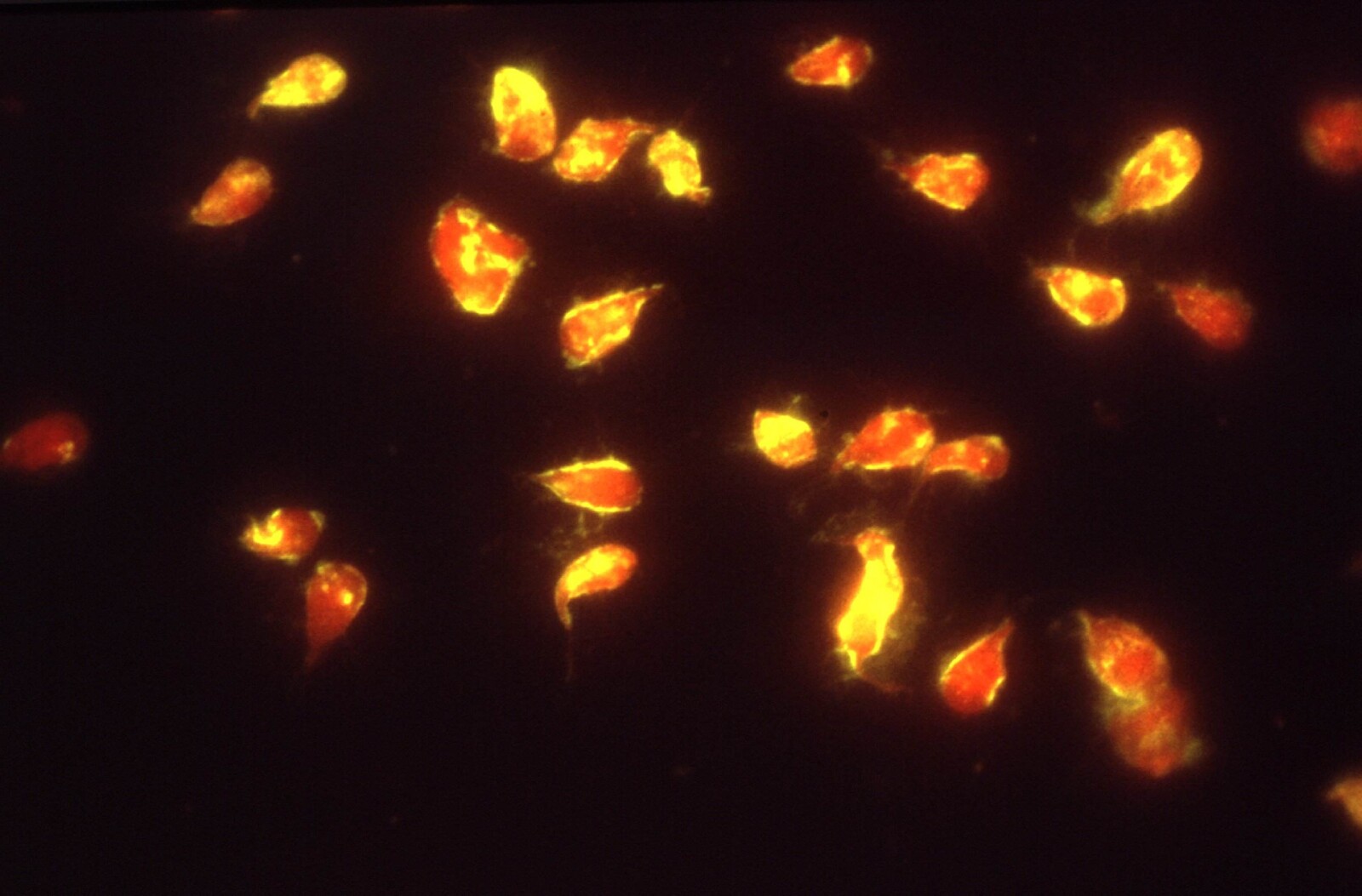Cervical Cancer: A Silent Threat Unveiled
This article examines cervical cancer, a stealthy disease that begins in the cervix's cells. We highlight its development, from abnormal cells to dysplasia and potential malignancy. We discuss primary types, symptoms, and the crucial role of early detection through regular screening. Also, we detail treatment options, survival rates, and the impact of cancer staging. The significance of HPV vaccination in prevention and the power of awareness are underscored. Our aim is to empower readers through knowledge, fostering understanding and awareness.

Key Takeaways
- Cervical cancer starts in the cells of the cervix and develops slowly over time.
- The two main types of cervical cancer are squamous cell carcinoma and adenocarcinoma.
- Long-lasting HPV infection is the primary cause of cervical cancer.
- Screening for cervical cancer is crucial for early detection and can be done through routine health care.
Understanding the Origins and Development of Cervical Cancer
To comprehend the origins and development of cervical cancer, it is essential to delve into the cellular beginnings within the cervix, the slow progression of abnormal cells, and the potential transformation into invasive cancer cells. Cervical cancer often begins with the gradual mutation of healthy cells into abnormal ones, primarily at the squamocolumnar junction of the cervix. Cervical cancer risk factors include persistent Human Papillomavirus (HPV) infection, smoking, and a weakened immune system. Advances in cervical cancer research have underscored the importance of early detection through regular screening and the HPV vaccine's preventative role. Understanding these elements provides vital insight into the etiology of this disease, the importance of preventative measures, and the ongoing quest for improved treatment strategies.
The Anatomy of the Cervix and Its Role in Cervical Cancer
Where does the cervix, a critical part of the female reproductive system, fit into the broader context of cervical cancer, and how does its unique anatomy contribute to the development and progression of this disease? The cervix, located at the lower end of the uterus, is a gateway to the womb and plays a crucial role in fertility and childbirth. Its unique anatomy, consisting of an outer ectocervix and inner endocervix, is where most cervical cancers initiate. Cervical cancer can have a profound impact on fertility, often necessitating treatments that can affect a woman's ability to conceive or carry a pregnancy to term. Moreover, the disease can complicate pregnancy and childbirth in cervical cancer patients, posing additional risks to both mother and child.
Differentiating Between Various Types of Cervical Cancer
Diving into the specifics of cervical cancer, it's imperative to understand that, while all originating in the cervix, not all cervical cancers are the same, and differentiating between the various types is crucial for accurate diagnosis and effective treatment. Differentiating diagnostic procedures play a significant role in distinguishing the two main types: squamous cell carcinoma and adenocarcinoma. Squamous cell carcinoma, originating from the outer part of the cervix, is the most common, while adenocarcinoma arises from the glandular cells in the endocervix. The role of genetics in cervical cancer is also paramount, as certain inherited genetic mutations can increase the risk. Understanding these types and their genetic implications aids in developing targeted treatment plans, thereby improving patient outcomes.
Identifying the Symptoms and Causes of Cervical Cancer
Building upon our understanding of the types of cervical cancer, we will now turn our attention to identifying the symptoms and causes of this silent threat. Symptoms recognition is crucial as early signs may include abnormal vaginal bleeding, pain during sex, or pelvic pain. However, these may not be apparent until the cancer has progressed, reinforcing the importance of regular screenings. Risk factors evaluation is equally important in understanding the causes. Persistent Human Papillomavirus (HPV) infection is a primary cause. Other factors, such as smoking or a weakened immune system, may also increase risk. Understanding these symptoms and causes is a critical step in the fight against cervical cancer, aiding in early detection and potentially saving lives.
The Importance of Regular Screening for Early Detection
A woman's commitment to regular screenings can play a pivotal role in the early detection and treatment of cervical cancer. Such screenings are instrumental in identifying abnormal cells before they develop into cancer, thus improving the cervical cancer prognosis. The role of community outreach in promoting regular screening cannot be underestimated. Community initiatives can significantly raise awareness, dispel myths, and bridge knowledge gaps about cervical cancer. Through educational programs, women can be informed about the benefits of early detection. This proactive approach not only reduces the mortality rate but also enhances the possibility of successful treatment outcomes. Therefore, regular screening coupled with robust community outreach forms a formidable defense against the silent threat of cervical cancer.
Diagnostic Tests and Procedures for Cervical Cancer
Identifying cervical cancer accurately and timely requires a series of diagnostic tests and procedures that medical professionals use to detect abnormal cells and determine the extent of the disease. The primary diagnostic procedures include the Pap test and Human Papillomavirus (HPV) test, which are pivotal advancements in screening. Should these tests indicate abnormalities, a colposcopy may be performed for closer examination. In some cases, a biopsy is required to confirm the presence of cancerous cells. Imaging tests like MRI, CT, or PET scans can also be utilized to determine if the cancer has spread. The combination of these methods, along with the continuous advancements in screening techniques, plays a crucial role in the early detection and successful treatment of cervical cancer.
The Role of HPV in Cervical Cancer Development
In the complex matrix of cervical cancer development, Human Papillomavirus (HPV) emerges as a predominant factor, and understanding its role is crucial for prevention and early detection strategies. HPV infection significantly escalates the risk of cervical cancer. It is responsible for almost all cases, making HPV prevention a paramount concern. HPV types 16 and 18 are notably malignant, causing about 70% of cervical cancer cases. The mechanisms of HPV induced cervical cancer are multifaceted. The virus introduces its DNA into the host's cells, leading to the production of viral proteins that can interfere with cell regulation, promoting abnormal growth. Thus, understanding the role of HPV in cervical cancer development is a critical step in mitigating this preventable disease.
The Impact of Cervical Cancer Stage on Treatment Options
Determining the stage of cervical cancer profoundly influences the selection of appropriate treatment options, affecting everything from surgical decisions to chemotherapy regimes. The impact of late stage diagnosis is particularly significant, as it often limits the range of viable treatments and may necessitate more aggressive approaches. For instance, early-stage cancers may be effectively treated with surgery or radiation, while advanced stages may require a combination of radiation and chemotherapy. Furthermore, advancements in targeted therapies are slowly revolutionizing treatment, particularly for late-stage cervical cancer. These therapies specifically target cancer cells, potentially reducing side effects and improving outcomes. However, their availability and effectiveness can be influenced by the stage of cancer at diagnosis. Thus, early detection remains paramount in cervical cancer management.
Overview of Treatment Options for Cervical Cancer
The range of treatment options for cervical cancer encompasses various modalities, including surgery, radiation therapy, chemotherapy, and in some cases, targeted therapies. The choice of treatment is typically based on the stage of the disease, the patient's overall health and personal preferences. Recent treatment advancements have allowed for more personalized and effective strategies, improving the prognosis for many patients. For instance, minimally invasive surgical techniques and improvements in radiation therapy have resulted in fewer side effects and better outcomes. Additionally, there has been increasing interest in alternative therapies, including lifestyle modifications and nutritional supplementation, which can complement traditional treatments and improve quality of life. As our understanding of cervical cancer continues to grow, so too does our arsenal of treatment options.
Special Considerations for Rare Pediatric Cervical Cancers
While cervical cancer is primarily a disease that affects adult women, a small number of cases occur in pediatric patients, necessitating specialized treatment approaches and careful consideration of long-term health impacts. In rare pediatric cervical cancers, treatment approaches often require a tailored strategy, considering the child's growth and development. Genetic factors may also play a distinct role in these uncommon cases, influencing both the onset and progression of the disease. The prognosis of pediatric cervical cancer is generally favorable with early detection and appropriate treatment, but long-term effects, including impacts on fertility and sexual health, must be extensively discussed with the patient and family. Continued research is vital to improve understanding and management of these rare pediatric cases.
Coping Mechanisms and Support for Cervical Cancer Patients
After a diagnosis of cervical cancer, patients and their loved ones may find themselves grappling with a range of emotions, and during this challenging time, robust coping mechanisms and comprehensive support systems become vital in managing the disease journey. Counseling services can provide a safe space for patients to express their fears and concerns, while also offering practical strategies for dealing with physical and emotional stress. Survivor support groups, on the other hand, can offer an empathetic community, where patients can share experiences and find comfort in knowing they are not alone. These resources, along with a strong network of family and friends, can significantly assist in navigating the complex journey of cervical cancer.
HPV Vaccination: A Preventative Measure Against Cervical Cancer
In our society's ongoing battle against cervical cancer, HPV vaccination has emerged as a powerful weapon, reducing the disease's incidence by targeting its most common cause. The benefits of HPV vaccination are numerous and include prevention of HPV types responsible for 70% of cervical cancer cases. This preventative measure has the potential to significantly decrease the number of cancer diagnoses and deaths, thereby enhancing the quality of life for individuals worldwide. The public health impact of HPV vaccination cannot be overstated. It not only decreases the burden on healthcare systems but also promotes a healthier, more cancer-resilient society. Public health efforts must continue to advocate for HPV vaccination as a primary defense against this silent yet preventable threat.
Raising Awareness and Understanding of Cervical Cancer
Everyone should be aware of the risks and symptoms of cervical cancer, and this can only be achieved through comprehensive education and widespread awareness campaigns. Preventing cervical cancer is a critical public health issue, and a key factor in this fight is the importance of education. Knowing the risk factors, understanding the significance of regular screenings, and recognizing early warning signs are all essential components of prevention strategies. Additionally, understanding the potential life-saving benefits of HPV vaccination further emphasizes the role of education in combating this disease. Therefore, by promoting educational initiatives and increasing awareness, we can equip individuals with the necessary knowledge to make informed decisions, ultimately contributing to the prevention of this silent threat.
Frequently Asked Questions
How Does the Menstrual Cycle Affect the Development or Progression of Cervical Cancer?
The menstrual cycle's influence on the development or progression of cervical cancer is not entirely clear. However, hormone fluctuations impact the cervix, potentially affecting the progression of disease. Hormonal changes during the menstrual cycle can alter the cervical environment, potentially affecting HPV persistence and progression to cancer. More research is required to fully understand the complex relationship between the menstrual cycle and cervical cancer.
Is There a Genetic Predisposition to Developing Cervical Cancer and if So, How Can It Be Detected?
Genetic predispositions to cervical cancer exist, although they're not as commonly recognized as in breast or ovarian cancers. Advancements in genetic testing can help identify these hereditary risks. A comprehensive hereditary risks analysis involves examining genes associated with cervical cancer, like HLA-B*07, TAP1, and TP53. Genetic counseling, alongside routine screenings, can assist those with a family history of cervical cancer in understanding their risks and adopting preventative measures.
Are There Any Lifestyle Changes That Can Reduce the Risk of Developing Cervical Cancer?
Lifestyle modifications can significantly reduce the risk of developing cervical cancer. A balanced diet, rich in fruits and vegetables, can have a positive dietary impact on overall health and immunity. Regular exercise and maintaining a healthy weight also contribute to cancer prevention. Crucially, obtaining the HPV vaccination offers robust protection against the high-risk strains of HPV responsible for most cervical cancers. Avoiding smoking and limiting sexual partners can further decrease risk.
Can Cervical Cancer Recur After Treatment? if So, What Are the Signs to Look Out For?
Yes, cervical cancer can recur after treatment, a phenomenon often linked to treatment resistance. Recurrence triggers may vary but are often connected to residual cancer cells. Signs of recurrence may mirror initial symptoms including abnormal vaginal bleeding, pain during intercourse, pelvic pain, and unusual vaginal discharge. Any persistent changes should be promptly reported to a healthcare provider. Regular surveillance post-treatment is critical to detect possible recurrence early.
How Does Cervical Cancer Affect Fertility and What Options Are Available for Women Who Wish to Have Children After Treatment?
Cervical cancer treatment, particularly surgery and radiation, can impact fertility by affecting the function of the cervix and uterus. However, fertility preservation techniques such as ovarian transposition, egg or embryo freezing offer hope. Adoption possibilities also exist for those unable to conceive naturally post-treatment. Each method has its pros and cons, so consultation with a fertility specialist alongside the oncology team is crucial to make an informed decision on family planning post-cervical cancer treatment.
Conclusion
This article elucidates the imperative nature of cervical cancer awareness, highlighting the importance of regular screening, early detection, and HPV vaccination. Emphasizing the role of knowledge in combating this silent threat, it underscores the various treatment options, the significance of cancer staging, and the necessity of a strong support system. Through understanding and preventive measures, the impact of this potentially devastating disease can be significantly mitigated, contributing to improved survival rates and quality of life.

This post has been generated by AI and was not reviewed by editors. This is Not legal advice. Please consult with an attorney.




